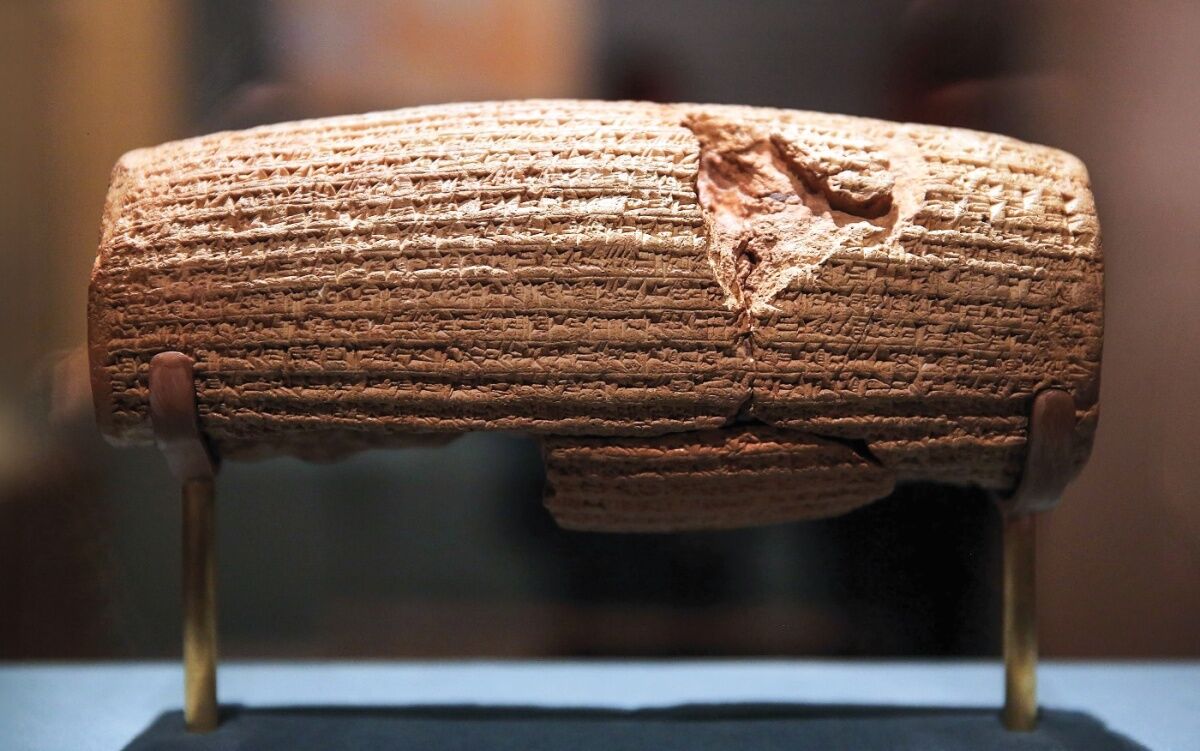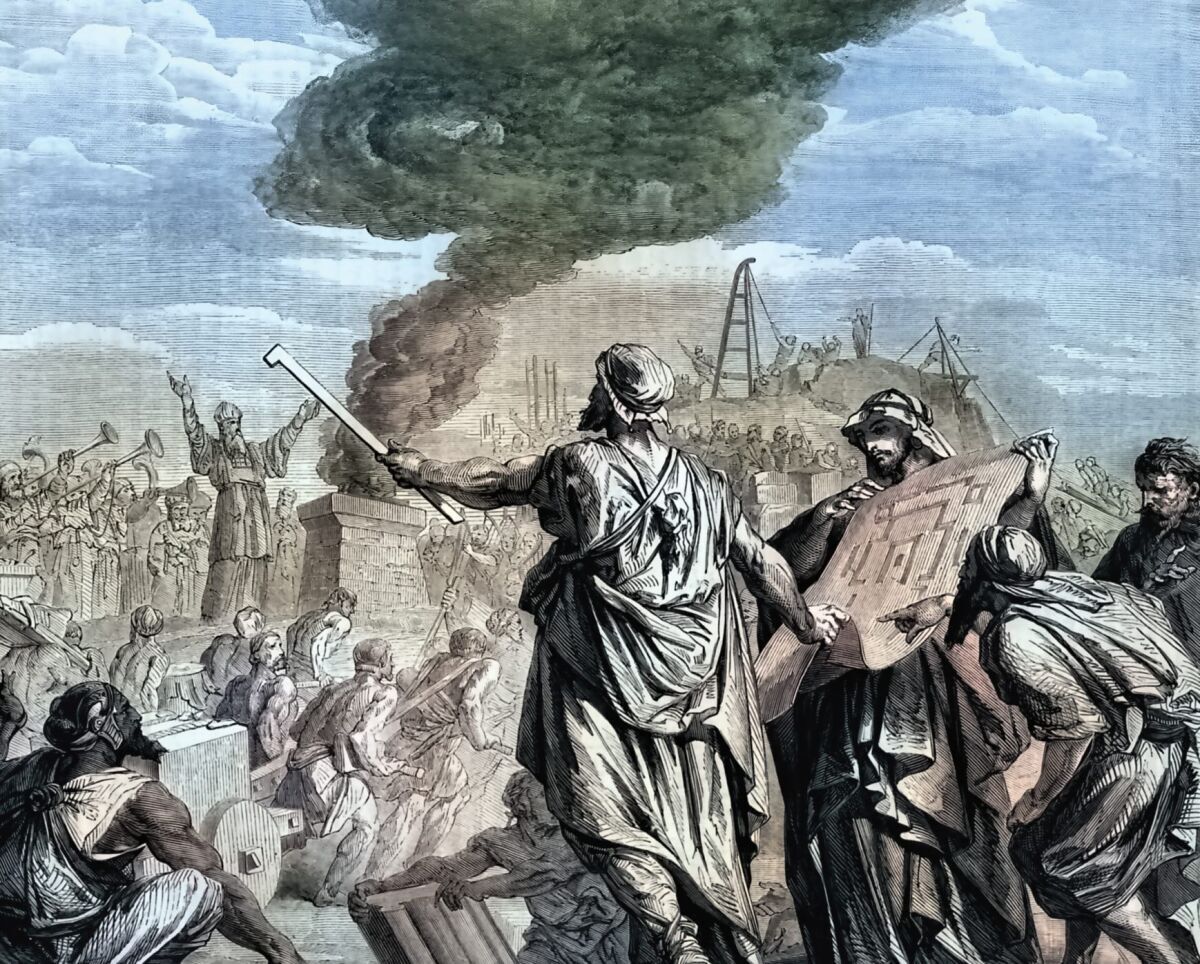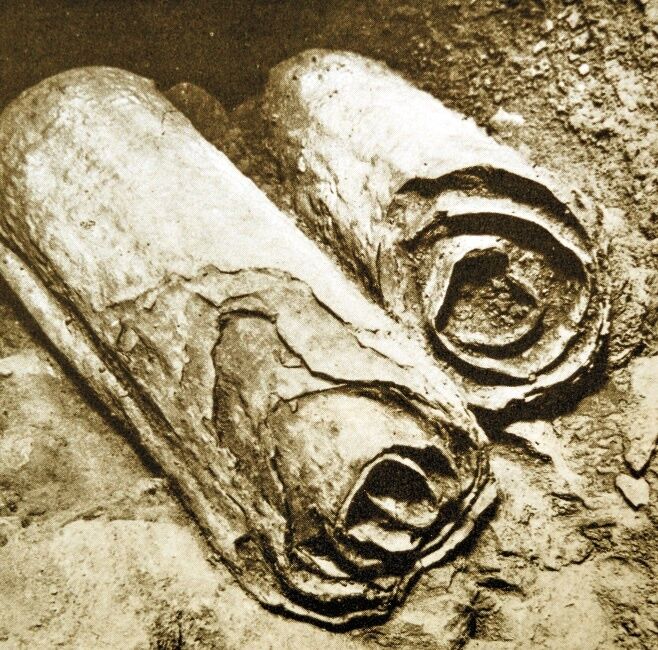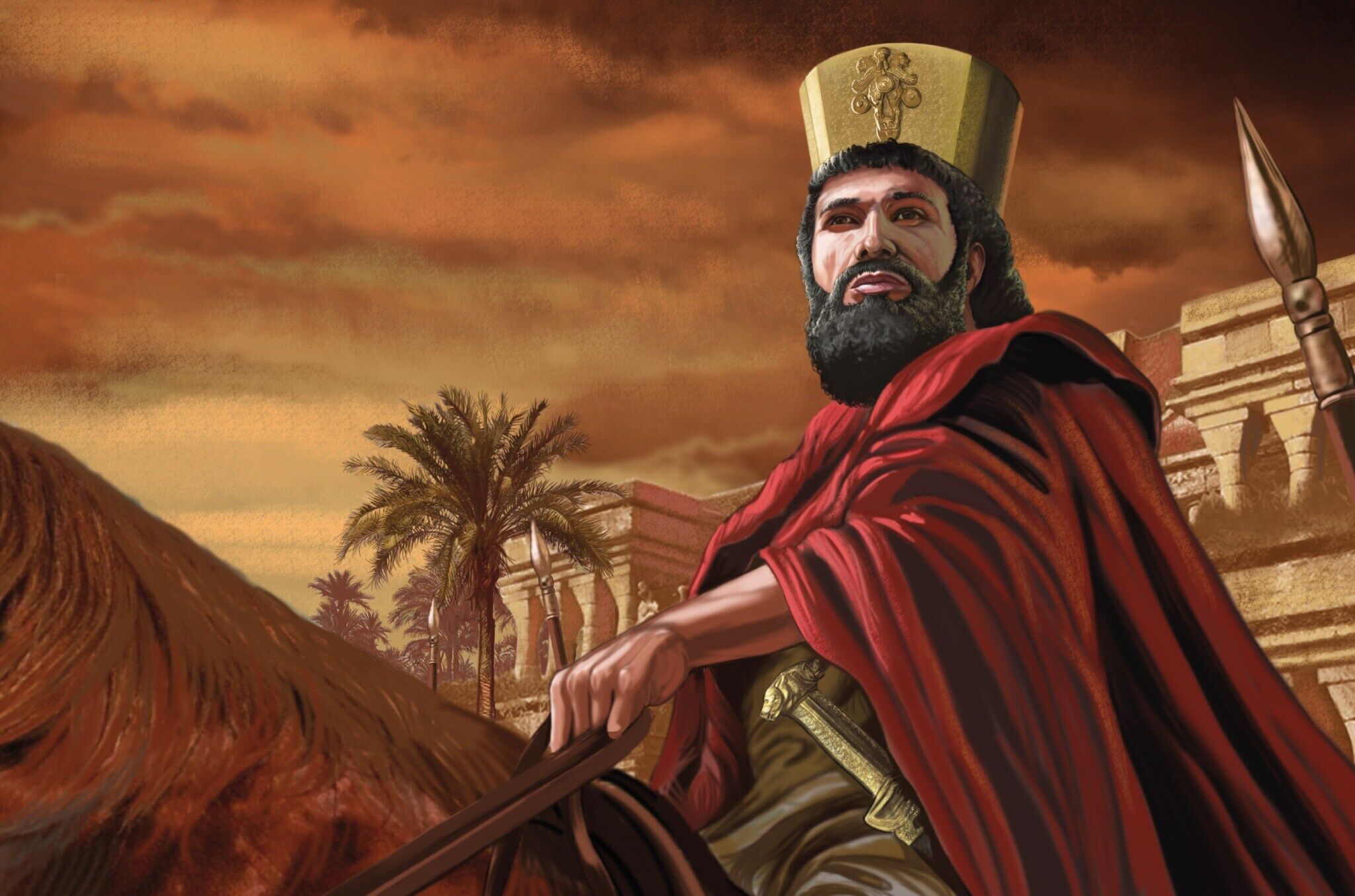Ever since it snatched power in 1979, the radical Islamist regime that leads Iran has pursued Israel’s destruction. For more than 40 years, Tehran has been the epicenter of anti-Western sentiment and the global persecution of Jews. The heart-breaking events of Oct. 7, 2023, and the events since have provided a glimpse into the depths of Iran’s hatred of the Jews.
It would seem like hatred of this magnitude would be built-up over centuries, even millenniums. But this isn’t the case. The Iranian people are actually the descendants of one the gentlest of all the ancient empires, an empire that keenly supported the Jews and the Jewish state! The nation of Iran—much to the mortification of the present-day Islamist regime in Tehran—has a noble history of showing tremendous kindness to the Jews!
The man responsible for this policy of altruism was King Cyrus ii, widely known as Cyrus the Great. There is much to learn and admire about King Cyrus and no shortage of history on this subject. But the most interesting feature about Cyrus is also the most obscure.
Meet Cyrus
Cyrus ii ruled the Persian Empire, also known as the Achaemenid Empire, from 559 to 530 b.c.e. His life and accomplishments are well documented by Greek, Roman and Persian historians, and by archaeological evidence. Cyrus conquered the mighty Babylonian-Chaldean Empire, paving the way for Persia to become the most powerful kingdom in the world for more than 200 years.
Under Cyrus, the borders of the Persian Empire began to expand to create a massive empire, larger territorially than even the Roman Empire. Persia’s borders eventually stretched to Central Asia (Russia’s southern border today); as far east as the Indus River (the Pakistan-India border); as far north as the Danube, including Turkey, Crete and the southern parts of Greece and Bulgaria; and as far southwest as Libya.
Cyrus was much more than a prodigious conqueror. He heralded a new style of governance, one that was utterly unlike that of the Assyrians, Babylonians and others before him. He was the opposite of Ayatollah Ali Khamenei today, who, via the Islamic Revolutionary Guard Corps, rules through brutality and fear. Cyrus didn’t beat, torture and murder people into submission.
“Cyrus was an outstanding soldier and statesman,” Encyclopedia Britannica says. “He founded an empire that stretched from the Indus and Jazartes to the Aegean and the borders of Egypt and left behind him a reputation for justice and clemency …” (emphasis added throughout). The Mainstream of Civilization says, “Cyrus created a new type of empire. Under the close supervision of his government, he permitted the conquered peoples to retain their own customs and religions and their own forms of government.” Imagine how different the Middle East, and even international politics, would be today if Iran’s leaders ruled in the enlightened spirit of King Cyrus?
There were very few revolts or rebellions in Persia. This is because subjects, even those of a different ethnicity, race or religion, tended to be more content. Persia’s more altruistic style of governance was key to the empire’s longevity.
The World’s Greatest City
The Babylonian Empire dominated the Middle East in the early-to-mid sixth century b.c.e. The capital city of Babylon was extraordinarily well fortified, teemed with top-notch soldiers, and had a well-earned aura of impenetrability. It was the greatest city in the world.
The city experienced a massive makeover by King Nebuchadnezzar ii in the late seventh and early sixth centuries b.c.e. The Babylonian king spared nothing in expanding, fortifying and beautifying his city. Babylon’s legendary hanging gardens, built for the queen who missed her lush, mountainous homeland in Media, were an engineering marvel, one of the Seven Wonders of the Ancient World.
Herodotus records that Babylon covered 507 square kilometers (196 square miles) and was protected by an outer wall that was 95 meters (311 feet) high and 27 meters (87 feet) thick. The walls were so thick, even at the top, that chariots could be driven on them. Access through the fortified walls was controlled by more than 100 bronze gates.
The Euphrates River snaked through the city, like the Thames through London. Inside the outer wall, the banks of the river “were lined and walled with brick. In the wall on either side of the river were 25 gates. There was a bridge 1,080 yards long and 30 feet broad across the river. At either end of this bridge was the royal palace. The more magnificent of these palaces was surrounded by three walls. The middle wall was 300 feet high, with towers 420 feet in height. The inner wall was yet higher. The two inner walls, Ctesias tells us, were of colored brick. Upon them were portrayed hunting scenes—the chase of the leopard and the lion” (A Handbook of Ancient History in Bible Light).
King Cyrus stepped onto the scene in 539 b.c.e. and attempted the impossible: He wanted to conquer Babylon. His strategy was brilliant and simple. First, he dug trenches to divert the water from the Euphrates into a large reservoir. Once the water level had dropped, his soldiers marched, under the cover of darkness, up the river and under Babylon’s giant gates.
His soldiers had infiltrated the outer gates, but there were still the internal brass and iron gates. If these couldn’t be penetrated, the riverbed would become a kill box. Persia’s warriors would be sitting ducks as Babylonian spears and arrows rained down on them.

But strangely, on the night of the invasion, there were no soldiers and Babylon’s internal gates were wide open. King Nabonidus, his son Belshazzar, the imperial guard, the soldiers and many of the people of Babylon were partying. Consumed with drinking and games, they had failed to close the gates and to station guards. Having quenched the Euphrates and penetrated the outer gates, the Persian soldiers practically strolled into Babylon, taking the city—including the shocked king—by surprise.
It was a magnificent victory, some have even called it miraculous, that was recorded by several ancient historians, including Herodotus and Xenophon. Modern historians, using Babylonian archaeology and cuneiform documents, try to understand the details of Babylon’s sudden fall. However it happened exactly, Babylon and the entire Babylonian Empire now belonged to King Cyrus of Persia.
Cyrus the Humanitarian
In 1879, British archaeologists digging in Iran discovered a barrel-shaped cylinder made from clay. Inscribed on the cylinder in ancient cuneiform was a decree by King Cyrus of Persia. In the 40-line decree, the king recalled his defeat of Babylon and clearly outlined a number of policies that, much to everyone’s surprise, protected the rights of the conquered.

This incredible artifact, called the Cyrus Cylinder, is on display in the British Museum. This cylinder confirms the historical records showing that King Cyrus displayed a tremendous and unprecedented respect and tolerance for the religion and customs of the peoples he conquered. The United Nations calls the Cyrus Cylinder the “world’s first charter of human rights.”
King Cyrus’s greatest and most famous humanitarian act was releasing the captive Jews in Babylon and allowing them to return to Judah to rebuild the temple and the city of Jerusalem. This decision by Cyrus is well documented by Greek and Roman historians, as well as by Josephus. The Cyrus Cylinder essentially parallels Cyrus’s decree to release the Jews, a fact widely accepted by scholars.
King Cyrus issued his decree releasing the Jews in 538 b.c.e., about a year after he conquered Babylon. Zerubbabel, a leading Jewish figure in Babylon at the time, was responsible for mustering the party and leading it back to Jerusalem. Upon returning to Israel’s capital, Zerubbabel and his supporters rebuilt Solomon’s temple. One of the most astonishing features about this decree is that there was no cost or price to the Jews. In fact, the king of Persia financed the Jews’ return to their homeland, their reconstruction of the temple, and their reconstruction of Jerusalem!
Any historian will agree: Such magnanimity and benevolence from a man with supreme power is extremely rare! Cyrus the Great was truly an anomaly among world leaders.
Biblical History
All of this history is well documented by secular historians and archaeological evidence. It’s also recorded in detail in the Bible. Ezra 1:1-4, for example, records Cyrus’s decree releasing the Jews so they could return to Jerusalem. These scriptures in Ezra were recorded several decades after the event. 2 Chronicles 36, written after Cyrus was on the scene, also document the reign of King Cyrus.
Then there’s the passage in Isaiah 44, which also discusses Cyrus the Great. This is where the history gets especially interesting. Verse 28 reads: “[God] saith of Cyrus: ‘He is My shepherd, And shall perform all My pleasure’; Even saying of Jerusalem: ‘She shall be built’; And to the temple: ‘My foundation shall be laid.’” Isaiah appears to be writing about how King Cyrus would be an instrument in God’s hands (“My shepherd”), and explains that God would inspire Cyrus to rebuild Jerusalem and the temple.

The thought continues in Isaiah 45:1: “Thus saith the Lord to His anointed, To Cyrus, whose right hand I have holden, To subdue nations before him, And to loose the loins of kings; To open the doors before him, And that the gates may not be shut.” Here, Isaiah is saying that God would empower King Cyrus, even helping him “subdue nations” and conquer vast swathes of territory.
The narrative in verse 2 is even more specific: “I will go before thee, And make the crooked places straight; I will break in pieces the doors of brass, And cut in sunder the bars of iron.” This is clearly discussing King Cyrus’s conquest of Babylon. Notice, Isaiah refers Cyrus rupturing the “doors of brass” and “bars of iron.”
While Isaiah’s account is similar to those in Ezra and 2 Chronicles, there is one noteworthy difference. The book of Isaiah was written about 150 years before Cyrus the Great was born.
Is it possible? Was King Cyrus, his rise to power, his defeat of Babylon, his humanitarian legacy, his name—even Babylon’s gates of iron and brass—prophesied about 150 years before Cyrus’s birth?
The reader will have to research this question further, studying into the remarkable parallels between the biblical text and the secular records. How do we know when Isaiah was written and that it was long before Cyrus arrived on the scene? Isaiah 1:1 says: “The Vision of Isaiah the son of Amoz, which he saw concerning Judah and Jerusalem, in the days of Uzziah, Jotham, Ahaz, and Hezekiah, kings of Judah.”
This verse clearly says that Isaiah was alive and writing during the reigns of four kings of Judah: Uzziah, Jotham, Ahaz and Hezekiah. Biblical history and archaeology all clearly show these Judean kings reigning in the eighth century b.c.e. This is nowhere disputed. Bible commentaries agree that Isaiah was on the scene for about 50 years, roughly between 760 and 710 b.c.e. For example, Isaiah 38:1-8 show that he prophesied during the reign of King Hezekiah.
Over the last century, skeptics have claimed that the passage of scripture referring to King Cyrus must have been written after King Cyrus. The most prominent theory says that the book of Isaiah has multiple authors and that some parts of the book, mainly the latter chapters, were written much later than the first part of the book. According to the original theory, the book of Isaiah was compiled into a single book around 70 b.c.e.

But a copy of the entire book of Isaiah, including chapters 44 and 45, was discovered as part of the Dead Sea Scrolls. And these scrolls were dated to around 200 b.c.e., proving that the entire book was completed well before 70 b.c.e. (For more evidence of Isaiah’s early authorship, visit ArmstrongInstitute.org/89.)
Consider too: Josephus recorded that King Cyrus actually read this prophecy about himself in the book of Isaiah: “This was known to Cyrus by his reading the book which Isaiah left behind him of his prophecies …. This was foretold by Isaiah 140 years before the temple was demolished. Accordingly, when Cyrus read this and admired the divine power, an earnest desire and ambition seized upon him to fulfill what was so written …” (Antiquities of the Jews 11.1.2).
Of course, this raises the question: How did Cyrus learn about Isaiah’s prophecy? The biblical text says that Daniel lived in Babylon and had an office in both the Babylonian and Persian royal courts. Daniel 5 shows that after Cyrus took Babylon and toppled the Babylonian Empire, Daniel became a high-ranking official in Cyrus’s Medo-Persian Empire. Perhaps Daniel shared Isaiah’s text with King Cyrus.
All Hail King Cyrus
Take some time to really think on this and to study Isaiah 44 and 45. The evidence is compelling. First, it’s obvious that Isaiah 44:28 and 45:1-4 are talking about King Cyrus, who is mentioned by name. Next, consider Cyrus’s relationship with Jerusalem. Isaiah 44:28 records Cyrus “Even saying of Jerusalem: ‘She shall be built’; And to the temple: ‘My foundation shall be laid.’” The temple in Jerusalem hadn’t even been destroyed—and here Isaiah is prophesying that it would be rebuilt!
Verse 28 also explains the origins of Cyrus’s humanitarianism. Cyrus treated all his conquered peoples much the same way as he treated the Jews. And he didn’t just allow the Jews to practice their religion: He released them from captivity, loaded them up with wealth and treasures, gave them letters of endorsement, and sent them home to rebuild the temple and Jerusalem! Surely this is one of the greatest humanitarian acts in history.
Isaiah 45:1 says Cyrus would “subdue nations before him.” As it happened, Cyrus conquered more than 15 different peoples—all the way from Egypt to Turkey to Central Asia to the Indus River.
Verse 1 also says God would “loose the loins of kings” before Cyrus. The Jamieson, Fausset and Brown Commentary states: “The loose outer robe of the [kings], when girt fast around the loins, was the emblem of strength and preparedness for action; ungirt was indicative of feebleness [and weakness].” This is a perfect description of Nabonidus and Belshazzar on the night of Babylon’s fall.
Verse 1 also says God would “open the doors before him, And that the gates may not be shut.” The history of Babylon’s destruction shows that the king of Babylon left some of the internal gates of the city open that night! “In the revelry in Babylon on the night of its capture, the inner gates, leading from the streets to the river, were left open … which, had they been kept shut, would have hemmed the invading hosts in the bed of the river, where the Babylonians could have easily destroyed them. Also, the gates of the palace were left open, so that there was access to every part of
the city” (ibid).
In verse 2, Isaiah records, “And make the crooked places straight; I will break in pieces the doors of brass, And cut in sunder the bars of iron.” The strongest doors in Babylon were made from brass and iron (a fact noted by Herodotus), yet as Isaiah forecast, they were not able to withstand the army of Cyrus!
God Reigns Supreme
One question hovers above King Cyrus and this passage in Isaiah. Why would God prophesy the life and accomplishments of a Persian king 150 years before his birth? The answer to that question is the theme of Isaiah 44-46.
In Isaiah 45:3, God says, “And I will give thee the treasures of darkness, And hidden riches of secret places, That thou mayest know that I am the Lord, Who call thee by thy name, even the God of Israel.” God makes the purpose of this prophecy abundantly clear: The life and work of King Cyrus prove the existence of God!
Cyrus himself understood this. “Thus saith Cyrus king of Persia: All the kingdoms of the earth hath the Lord, the God of heaven, given me; and He hath charged me to build Him a house in Jerusalem, which is in Judah” (Ezra 1:2). This great king knew God existed, and he knew that God reigns supreme in the world of man.

